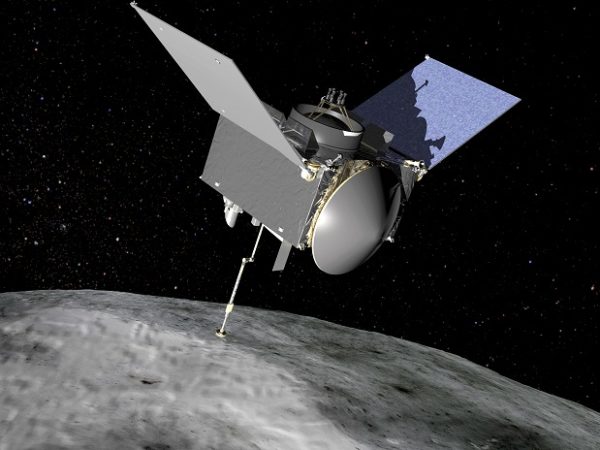
 Last month, the OSIRIS-REx spacecraft made its successful launch into the great unknown, starting out on its two-year journey to meet up with and gather samples from a distant asteroid, one which may one day be on a collision course with Earth.
Last month, the OSIRIS-REx spacecraft made its successful launch into the great unknown, starting out on its two-year journey to meet up with and gather samples from a distant asteroid, one which may one day be on a collision course with Earth.
The NASA-led mission depends on a significant contribution from the Canadian Space Agency and the instrument called the OSIRIS-REx Laser Altimeter (OLA). The OLA will be employed in mapping the surface of the asteroid named Bennu, a half-kilometre-wide space rock currently thought to have a 1-in-2,700 chance of impact with the Earth sometime late next century.
A product of team led by Dr. Michael Daly, associate professor of engineering at York University, and Dr. Catherine Johnson, planetary geophysicist at the UBC, the OLA’s task will be to use its set of lasers to produce a finely detailed map of Bennu’s surface, in preparation for the close encounter which will produce the material samples. “[The OLA] will map the asteroid shape in unprecedented detail, down to a resolution of a few centimeters,” says Dr. Johnson.
“OLA is a showcase for Canadian science and engineering expertise,” says Daly. “It is the first of a new class of laser-ranging instruments for asteroid and comet missions that provides extremely high resolution measurements of their shape and topography while creating additional observational flexibility and efficiency.”
OSIRIS-REx will not land on Bennu but will instead hover close to its surface and extend its robotic arm which will then shoot out a burst of nitrogen gas, hopefully blowing little chunks of rock into the arm’s collector head. Scientists hope that the material samples and the close-up encounter with Bennu, in total, will help answer questions about how the solar system was formed – asteroids like Bennu have been floating around virtually unchanged since the solar system was first created approximately 4.6 billion years ago.
The Canadian contribution to the space mission will ensure that if and when OSIRIS-REx makes it back to Earth (the return date is September 2023), Canada will own a portion of the collected materials – four per cent, to be exact. “These are the first samples on a sample return mission that Canada is going to own a portion of, and [the mission] really highlights the expertise of Canadian scientists and engineers,” says Tim Haltigin, senior mission scientist with the Canadian Space Agency.
NASA has announced that OSIRIS-REx recently passed its first health check of all five of its scientific instruments and one navigational instrument and has taken its “first-light” pictures with its cameras that show the Taurus constellation. The spacecraft also had a flight path correction which went off without a hitch, involving the first use of its thrusters to slightly alter its course on the way to Bennu. “The maneuver changed the velocity of the spacecraft by 1.1 mile per hour (50 centimeters per second) and used approximately 18 ounces (.5 kilogram) of fuel,” says NASA. “The spacecraft is currently about 9 million miles (14.5 million kilometers) from Earth.
Leave a Reply
You must be logged in to post a comment.


 Share
Share Tweet
Tweet Share
Share




Comment